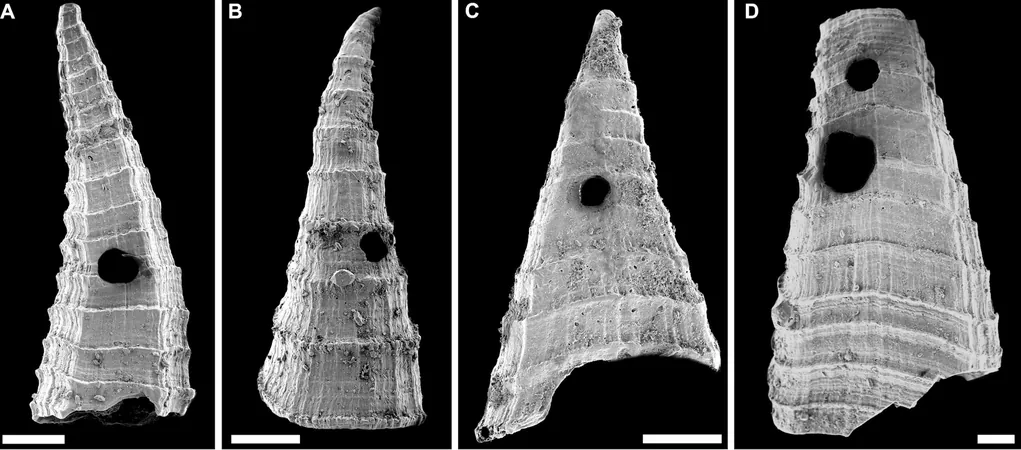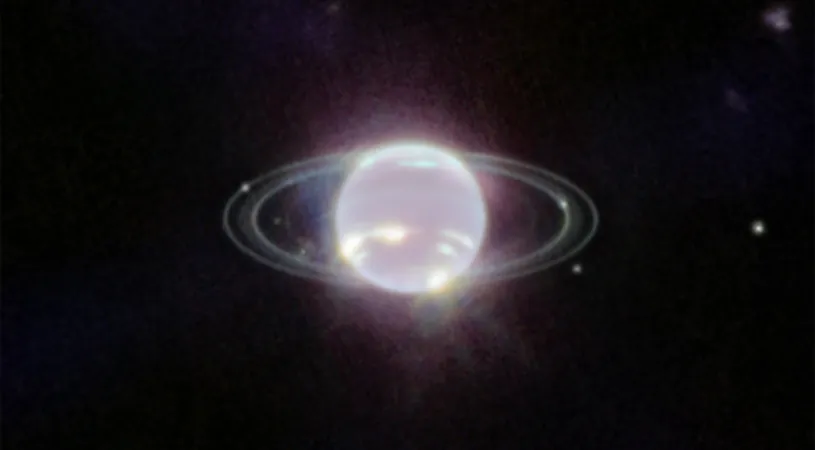
Groundbreaking Fossil Study Unveils the Ancient 'Arms Race' of Evolution!
2025-01-03
Author: Li
Introduction
A thrilling investigation led by the esteemed researchers at the American Museum of Natural History has uncovered what may well be the oldest known instance of an evolutionary 'arms race' - a fierce ongoing duel between predator and prey. These stunning interactions took place approximately 517 million years ago, deep in the waters of what is now South Australia. The study reveals how a tiny, shelled organism closely related to modern brachiopods faced a fearsome predator capable of piercing its defenses.
Publication and Significance
Published in the prestigious journal *Current Biology*, this remarkable research marks the first definitive evidence of an evolutionary arms race from the Cambrian period, a time renowned for the dramatic explosion of diverse life forms.
Expert Insights
"Predator-prey interactions are often highlighted as a vital factor driving the Cambrian explosion, specifically regarding the swift development of diverse biomineralizing organisms," explained Russell Bicknell, the lead author of the study and a postdoctoral researcher within the Museum's Division of Paleontology. "Yet, prior to our work, concrete evidence demonstrating a reciprocal response between predator and prey was scarce."
Understanding the Arms Race
An evolutionary arms race occurs when species on opposing sides of the food chain continuously adapt to one another's changes. Imagine the relentless cycle where one species enhances its predatory skills only to force its prey to evolve stronger defenses in return—a true battle for survival!
Fossil Findings
Bicknell, alongside fellow researchers from the University of New England and Macquarie University in Australia, meticulously examined an extensive cache of fossilized shells from an early Cambrian tommotiid species named *Lapworthella fasciculata*. These minuscule specimens—to give you an idea of their size, they range from just a tad larger than a grain of sand to nearly the size of an apple seed—contained numerous holes likely created by formidable hole-punching predators, possibly soft-bodied mollusks or worms.
Analysis and Results
The investigators conducted a thorough analysis of the fossilized shells relative to their geological ages. Their findings revealed a notable increase in shell wall thickness that paralleled an uptick in the number of perforated shells in a relatively short timeframe. This astonishing data suggests the presence of a microevolutionary arms race, where *L. fasciculata* adapted by strengthening its shell against predation, prompting its predator to refine its ability to breach increasingly formidable defenses.
Conclusion
"This groundbreaking evolutionary record illustrates for the first time how predation significantly contributed to the flourishing of early animal ecosystems," Bicknell stated, emphasizing the extraordinary speed at which these phenotypic changes developed during the remarkable Cambrian Explosion.
Future Research
As the mysteries of ancient life continue to unfold, this study opens the door to further understanding of the complex relationships that have shaped our planet's biodiversity through the ages—echoing the age-old truth that in the natural world, it's always eat or be eaten!



 Brasil (PT)
Brasil (PT)
 Canada (EN)
Canada (EN)
 Chile (ES)
Chile (ES)
 Česko (CS)
Česko (CS)
 대한민국 (KO)
대한민국 (KO)
 España (ES)
España (ES)
 France (FR)
France (FR)
 Hong Kong (EN)
Hong Kong (EN)
 Italia (IT)
Italia (IT)
 日本 (JA)
日本 (JA)
 Magyarország (HU)
Magyarország (HU)
 Norge (NO)
Norge (NO)
 Polska (PL)
Polska (PL)
 Schweiz (DE)
Schweiz (DE)
 Singapore (EN)
Singapore (EN)
 Sverige (SV)
Sverige (SV)
 Suomi (FI)
Suomi (FI)
 Türkiye (TR)
Türkiye (TR)
 الإمارات العربية المتحدة (AR)
الإمارات العربية المتحدة (AR)